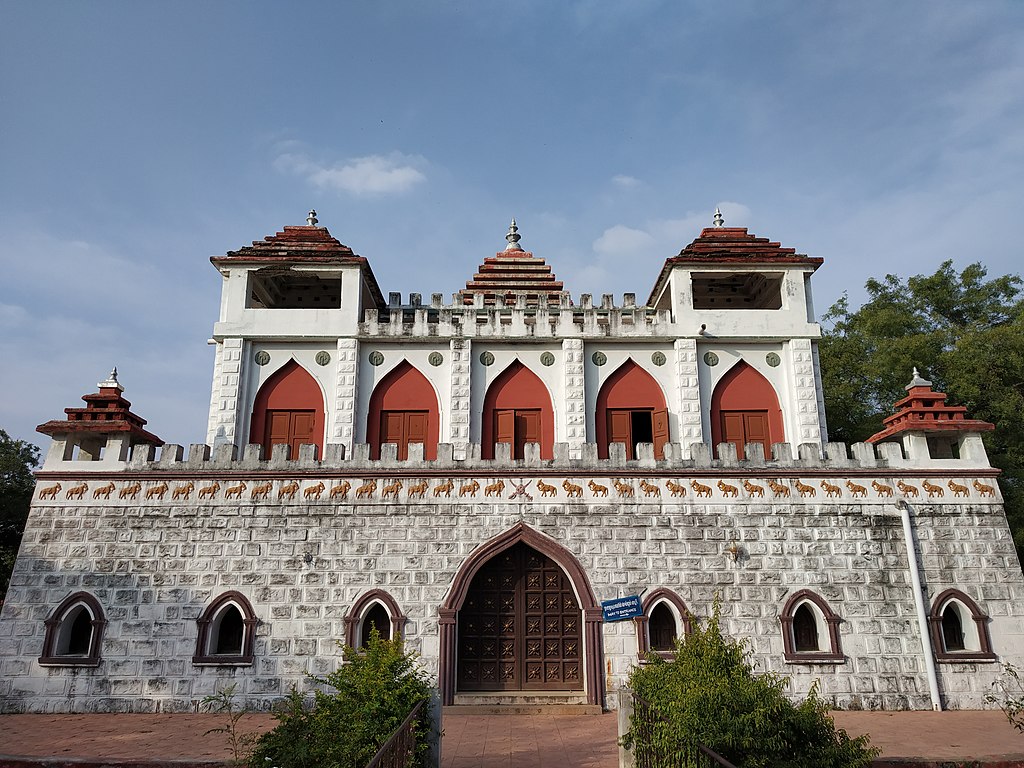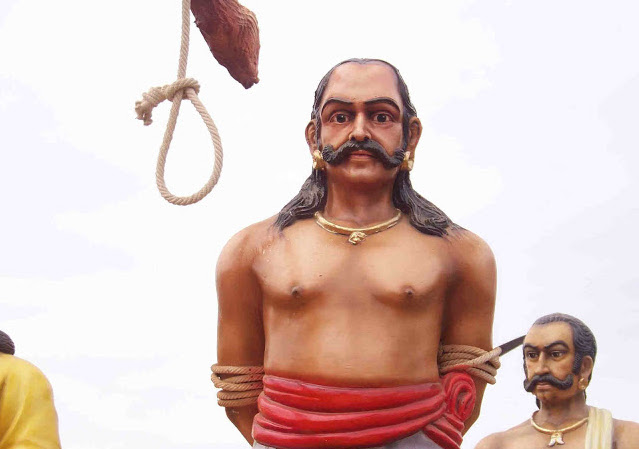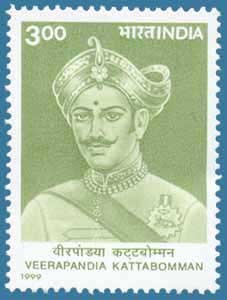Veerapandiya Kattabomman- A brave king and a soldier of Tamilnadu - A thread
The Great Veerapandiya Kattabomman was born at Panchalankurichi on January 3, 1760. He was from the southern Indian state of Tamil Nadu.
The Great Veerapandiya Kattabomman was born at Panchalankurichi on January 3, 1760. He was from the southern Indian state of Tamil Nadu.
Most historical accounts cite the revolt of 1857 as the ‘first war of independence’ in India against the British, they seem to overlook a valiant chieftain from Tamil Nadu in the late 18th century who refused to bow to British and singlehandedly waged war against the colonialists
He swore as a king on 2nd February 1790. In his ruling, the people of panchalangurichi were so happy and prosperous. He was the 47th of the ruler of his family called kattabomman. Since sworn in as a king of panchalangurichi he worked hard for his kingdom.
His father was a Palayakarar (a feudal title for a class of territorial administrative and military governors appointed by the Nayaka dynasty in southern India during the 16th and 18th centuries), from whom Veerapandiya assumed the position of the 47th Palayakarar when he was 30.
His kingdom came under the Tirunelveli district of Tamilnadu. Vellaithevan and Suntharalingam are the two most efficient and brave minister of his ministries.
After the normal ruling of around 8 years, the real problem started with the arrival of British in the soil of Tamilnadu
After the normal ruling of around 8 years, the real problem started with the arrival of British in the soil of Tamilnadu
He refused to pay taxes therefore, an East India company officer named Alan try to invade his fort. Initially, they came to Tamilnadu for undertaking their business but at the lapse of time, they began capturing the nearby territories by making in-debt of a small king like rulers
So how did the British manage to maintain a stronghold in the region? It was a well-calculated move. They lent huge sums of money to the Nawab of Arcot and demanded to be repaid through taxes and levies from all the Palayakarars under the Nawab’s domain.
As the Nawab was in severe debt, watched as his people were plundered by the British in the name of tax collection.
Except for Veerapandiya, every other Palayakarar yielded to the diktat of the company.
Except for Veerapandiya, every other Palayakarar yielded to the diktat of the company.
In fact, the British were quite crafty and tried to establish cordial alliances with all the regional statesmen, who in turn tried advising Veerapandiya to ally with the former and live in peace.
However, the young chieftain wasn’t one to relent and resisted all forms of pressure from the British. He openly declared his dissent against the regime and refused to support them in any of their undertakings.
Emerging as an undesirable element in the plan that the British had for the region, they began working on different conspiracies to bring the rebellious chieftain down.
However, they remained unsuccessful in their schemes until the British army suddenly decided to raid Panchalankurichi under the command of Major J. Bannerman in 1799.
As the entire village had been in Thiruchendur for a temple festival, the British hoped to ambush Veerapandiya unawares. But he had already learned of the attack through his informers and had prepared well in advance.
Right before the attack, Veerapandiya was ordered to surrender unconditionally through a messenger sent by Bannerman.
“We are the sons of this soil. We live with prestige, honor, and dignity and we let our soul die for the prestige, honor, and dignity of our land. We don’t bow down to the foreigners. We will fight until death,” was the smarting message taken back to the army commander.
Veerapandiya and his men held the fort quite valiantly against British troops, who couldn’t quite match up to their expertise and had to withdraw. However, Veerapandiya knew that his fort would not be able to withstand the onslaught if the British were to unleash their cannons.
During this battle, he lost his most intelligent and efficient minister vellaithevan. He could not bear the loss of vellaithevan. Following these setbacks, he just took the shelter in a deep forest at pudukkottai district.
This secret place was leaked to the British by his friend Ettappa naikkar. The useful information made the British to search easily and arrested kattabomman on On 24 September 1799.
Following an interrogation stretching over 15 days and a ridiculous trial, Veerapandiya was sentenced to public execution. Eventually, Kattabomman was hanged on 16th October 1799, in a tamarind tree at a place called kayathar.
Even in the face of death, he didn’t flinch and continued to stand by his ideals of honor, dignity, and prestige. He even boldly argued for the right of his homeland and admonished the British for their immoral and illegal occupation.
The conflict with East India Company didn& #39;t end after the death of Kattabomman. As in 1800, Poligars again rebel against the company.
As an ode to the great chieftain, the state government of Tamil Nadu erected a memorial in Kayathar, which was inaugurated by the then Chief Minister late J Jayalalitha in 2015.
The remnants of his old fort at Panchalankurichi is protected by the Archaeological Survey of India.
The remnants of his old fort at Panchalankurichi is protected by the Archaeological Survey of India.
On October 16, 1999, a postage stamp commemorating the bicentenary of Veerapandiya’s execution was released by the government of India in his remembrance.
We must not forget his bravery and sacrifices given for protecting his motherland.
From this history, it became a custom of Tamilnadu that no parent will name their child as & #39;Ettappan& #39; because he was disloyal to his motherland.
From this history, it became a custom of Tamilnadu that no parent will name their child as & #39;Ettappan& #39; because he was disloyal to his motherland.
@threadreaderapp unroll

 Read on Twitter
Read on Twitter






